Lox is salt-cured salmon that has been cold-smoked. To make lox you first ‘cook’ the fish with a salt-based cure (or dry brine) that will remove all the moisture from the fish. Then the cured fish is cold-smoked to add flavor and texture. While this may sound like a technical and difficult procedure, it’s actually quite easy to make your own lox at home.
There are many different variations of lox and many different methods for creating it. Over the last couple of years, I’ve made lox with several different methods and have settled on a recipe and procedure that is simple and yields consistent results. I hope you will find this recipe works well for you
1. Prepare the fish
Traditionally, Lox is made with salmon, but you can substitute other fish. I’ve made this dish with trout, steelhead, salmon, bass, and whitefish. It does turn out best with the larger fillets from salmon or steelhead.
Start by removing the skin. Place a fillet on a cutting board with the skin side down. Starting at the tail end of the fillet, work a sharp knife between the skin and the flesh. Keep downward pressure on the knife and work it forward until you’ve removed the skin.
Some lox recipes do not remove the skin. I’ve made lox from fillets with the skin on and the skin removed and found that removing the skin produces a better product. The fish cures more quickly and more evenly without the skin. You can leave the skin on and still have a good result. For this demonstration, I left the skin on.
2. Make the cure (dry brine)
The dry brine (or cure) is the most important part of making lox. The cure will ‘cook’ the fish by removing the moisture. The addition of pink salt prevents bacterial growth. There are only three required ingredients for the cure: salt, sugar (to balance out the salt), and pink salt (also referred to as Instacure #1, Prague powder).
A basic recipe for lox (or cold-smoked salmon) cure per 1 pound of fish is:
- 1/4 cup Kosher salt
- 1/4 cup granulated (white) sugar
- 1/4 tsp pink salt
Those are the only required ingredients. You can add other spices to change the flavor of your lox. Common favorites are dill, citrus peel (orange, lemon, lime), coriander, black pepper, and others.
For this batch of lox, I added orange peel, black pepper, coriander, and juniper berries to the basic cure. To be honest, I didn’t notice much flavor difference from just using the basic cure.
Now mix all the cure ingredients together.
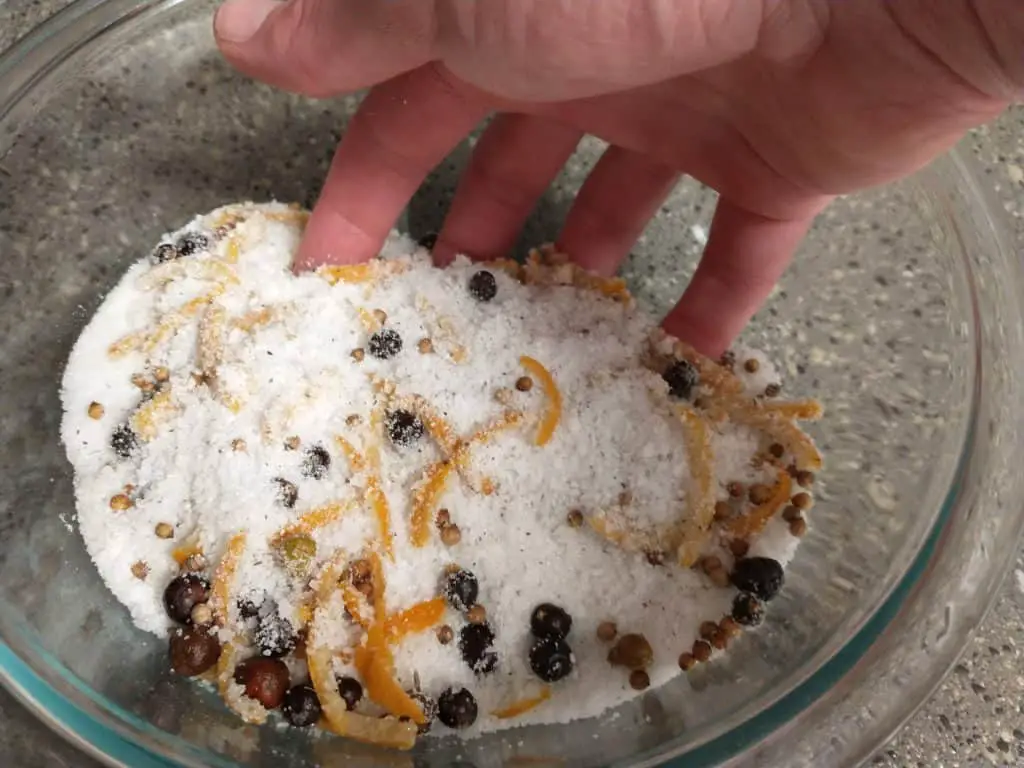
3. Pack the fish with the cure
I like to cure my fish in plastic wrap because I can wrap the fish tightly to keep the cure in contact with the fish. You can also use a non-reactive container (glass, plastic, stainless steel) but you may want to increase the amount of cure you use to fully cover the fish.
Lay down enough plastic wrap to fully wrap up your fish. Place about 1/2 of the cure mixture on the plastic wrap and set the salmon on top (skin side down, if you left the skin on). Put the rest of the mixture on top of the salmon. Take a little time to lightly rub the cure into the skin. Now wrap up the salmon. If you placed the salmon directly in a container, cover the top with plastic wrap and weigh it down.
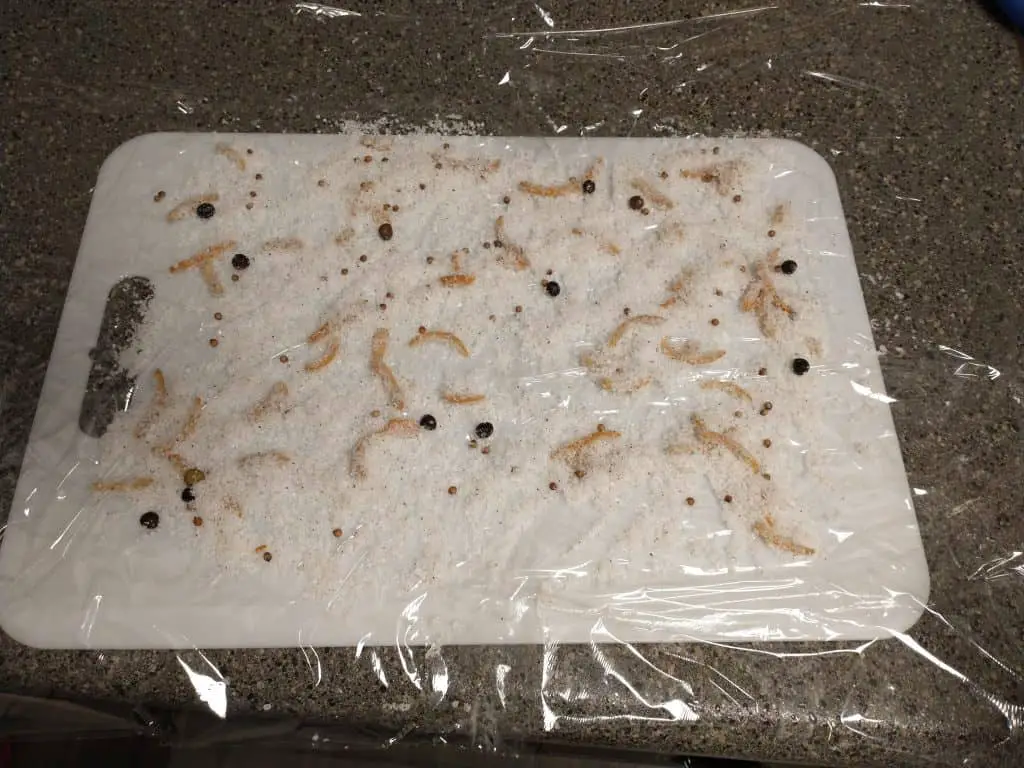
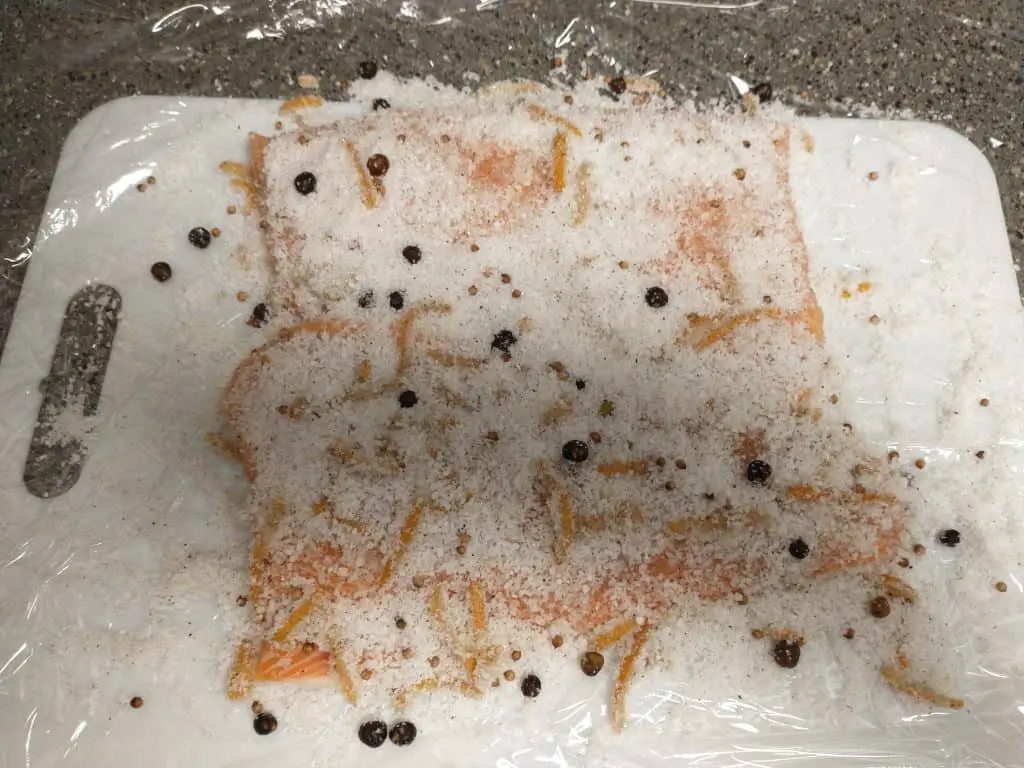
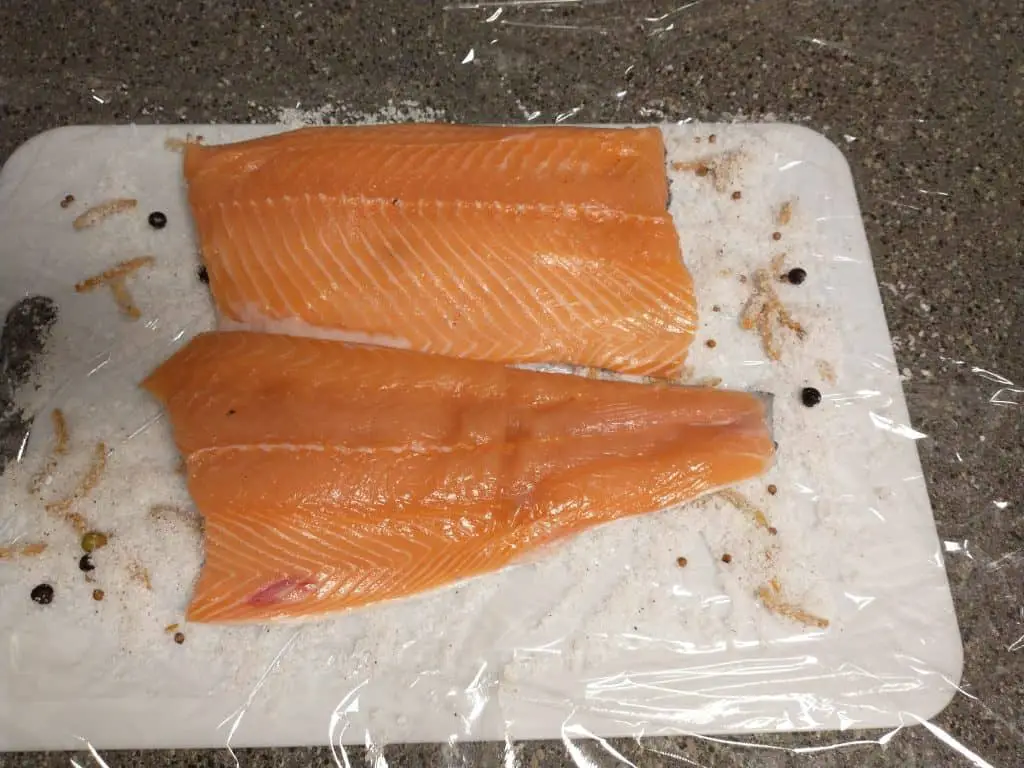
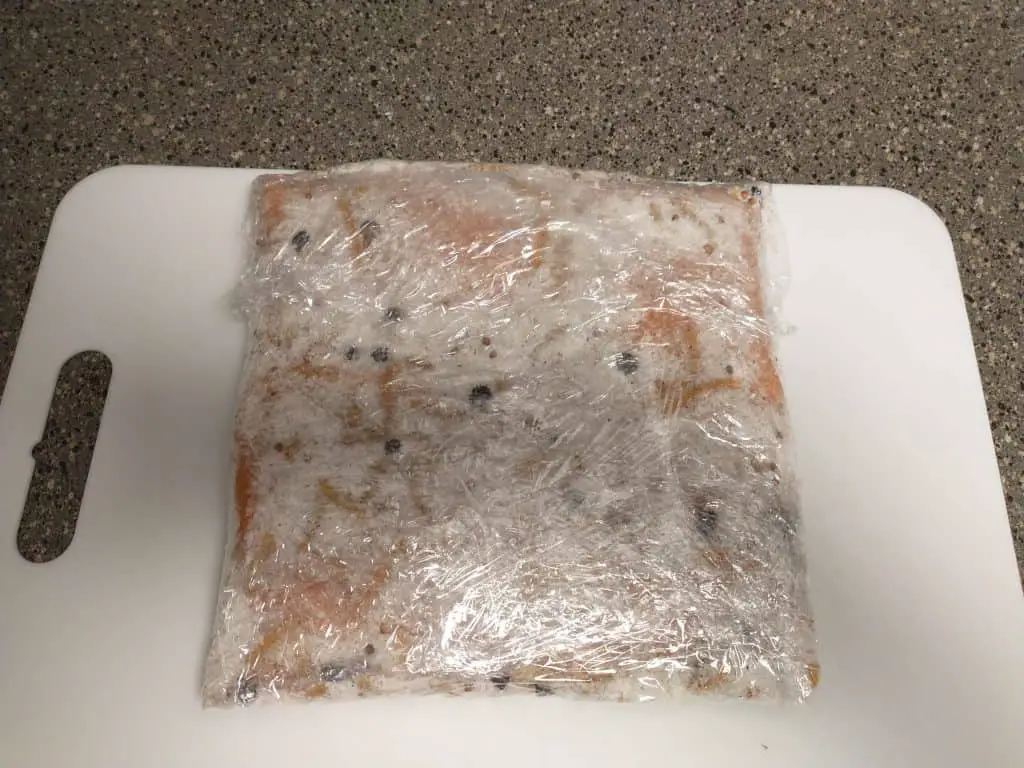
Place the wrapped fish in a nonreactive (plastic, glass, or stainless steel) container and weigh it down. The weight will help ‘push’ moisture out of the fish. I put my fish in a glass cake pan, then put a smaller pan and a few canned goods on top of the fish. This usually does the trick.
Now put your fish in the refrigerator to cure.
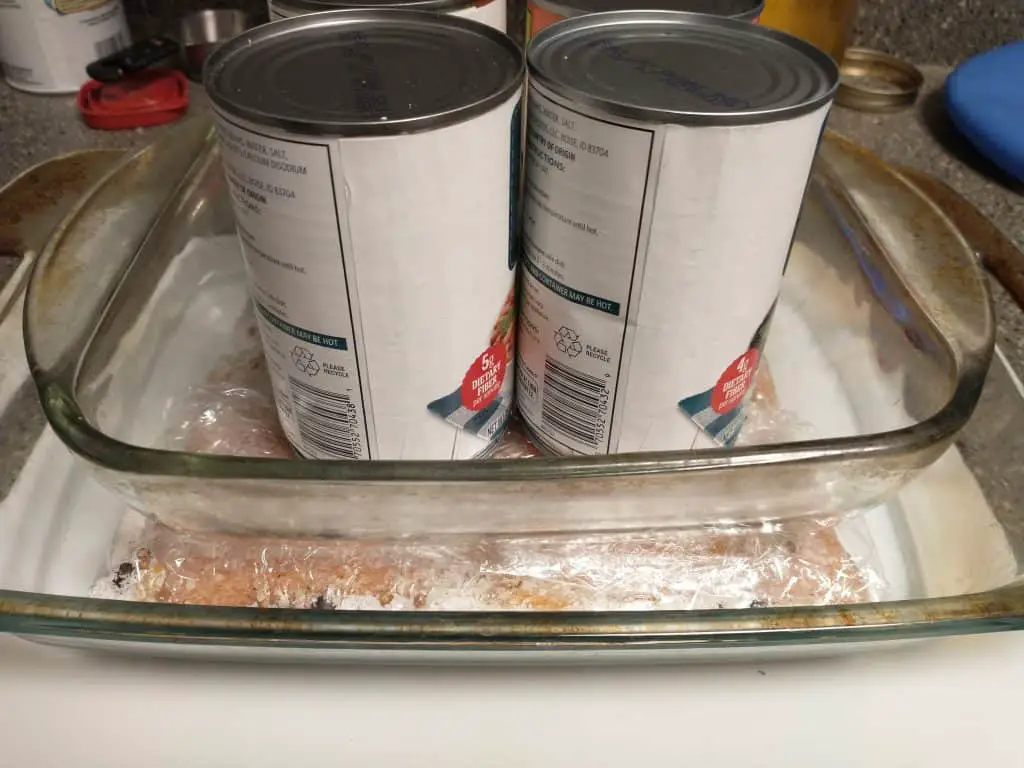
4. Cure the fish in the refrigerator
Leave the fish in the fridge for about 2 days. The cure will pull the moisture out of the fish and create a wet brine in the bottom of the container. If you wrapped your salmon in plastic wrap you can drain the juices periodically.
About every 12 hours I drain the juices, flip the salmon, and replace the weight. If you left the skin on your fillet I find it’s best to not flip it.
You will know the fish is cured when it is firm to the touch and no longer squishy. This takes about 2 days for a 2 lb fillet. It’s better to cure your fish longer than necessary than to not cure it long enough. If you’re not sure if the fish is ready, let it cure for another day.
Once your salmon is firm to the touch, it’s cured and ready to eat. Rinse the fish thoroughly under cold water and pat it dry with paper towels. You can slice and eat the fish just like this.
For an even better taste, I recommend taking a few more steps to smoke your fish.
5. Desalinate and dry
Before continuing, take a slice of your cured fish and give it a taste. If it’s too salty for your liking soak it in ice water for about 30 minutes to desalinate.
Now dry off the fish with paper towels and put it on a wire rack in the fridge to continue drying. Let the fish dry in the fridge for 12-36 hours. A tacky pellicle will form on the surface of the fish. This helps the smoke to ‘stick’ to the fish.
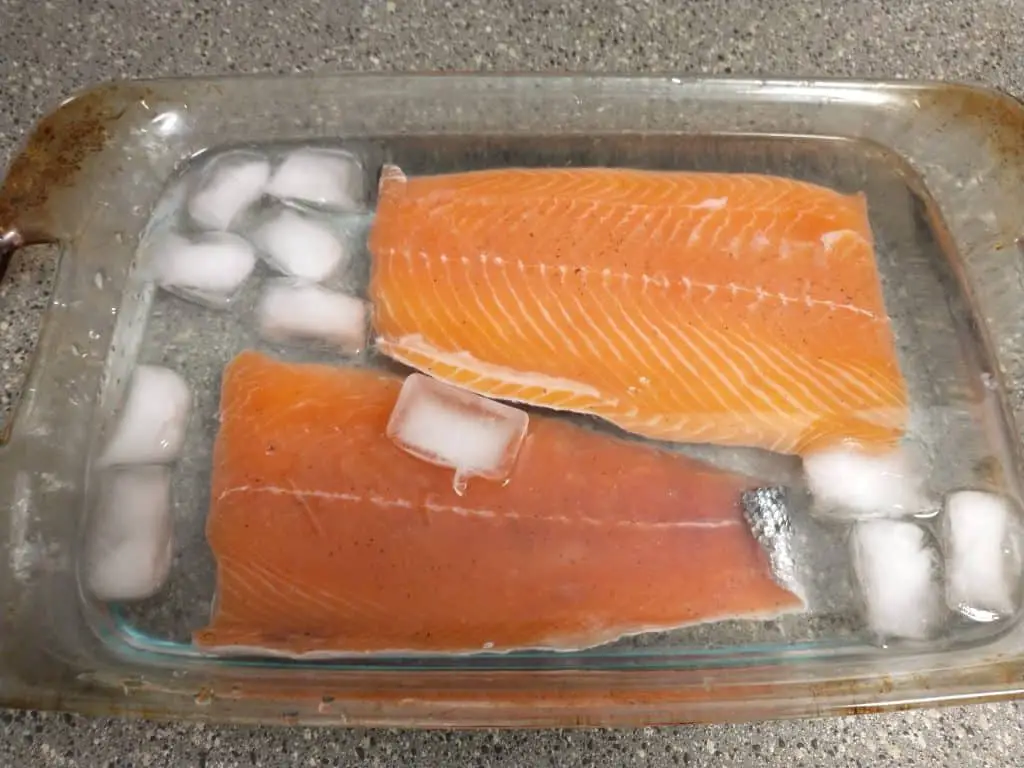
6. Smoke at a low temperature
Once the fish looks dry and feels tacky, slightly sticky, then it’s ready to smoke. Traditional cold smoking requires maintaining smoke at a temperature less than 90 degrees Fahrenheit for several hours. Most people don’t have a smoking setup that can perform like that.
I smoke my fish for 30-60 minutes on the lowest heat setting I can while still producing smoke. For my electric smoker, this is 100-150 F, depending on the time of year. If you have a charcoal smoker or grill, get one piece of charcoal started and cover it with wood chips. This will produce plenty of smoke and keep the temperature relatively low. You don’t need to leave your fish in the smoker for long to get a nice, smoky flavor.
This smoking method will yield fish with a slightly different texture than traditional smoked salmon, but it will still be delicious.

6. Eat!
Now it’s time to eat!
I like to take thin slices from the fillet. Since the fillets are relatively thin, you can get a larger piece by slicing at an angle. Eat plain or serve any other way you please!
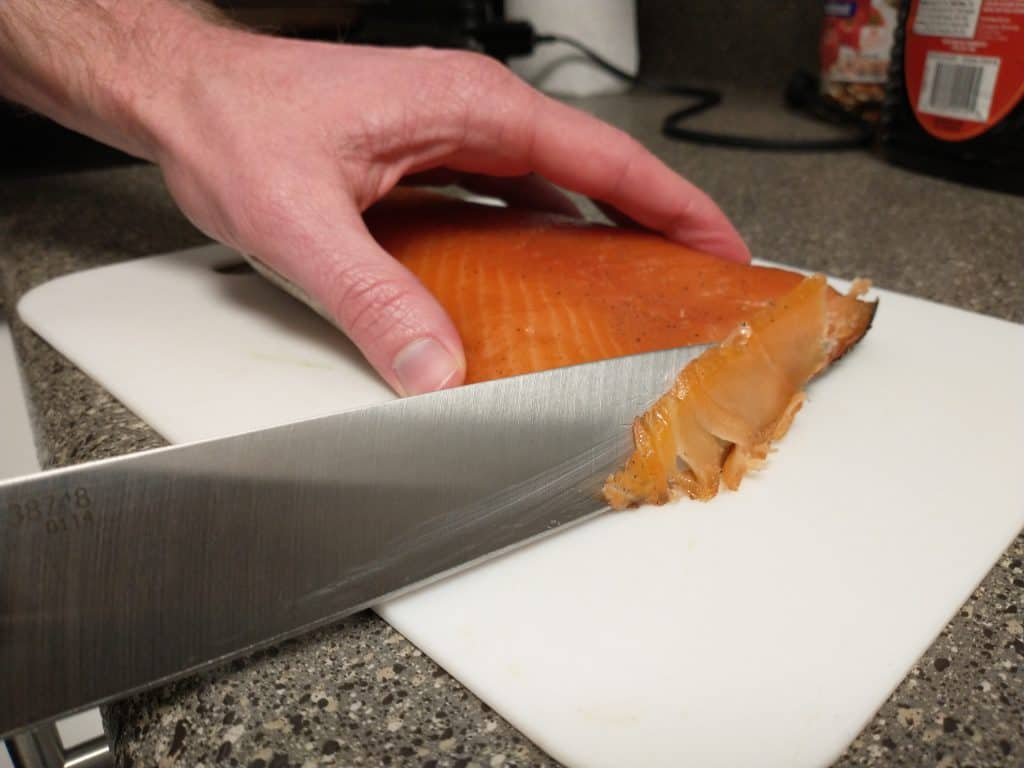
Conclusion
Making your own lox (cold-smoked salmon) is not as difficult as it may sound. This is something that can easily be done at home. This is one of my favorite ways to prepare fish and when done at home saves you a lot of money (buying lox is really expensive). Give this method a try, add your own spices, and find a variation that is your own!

